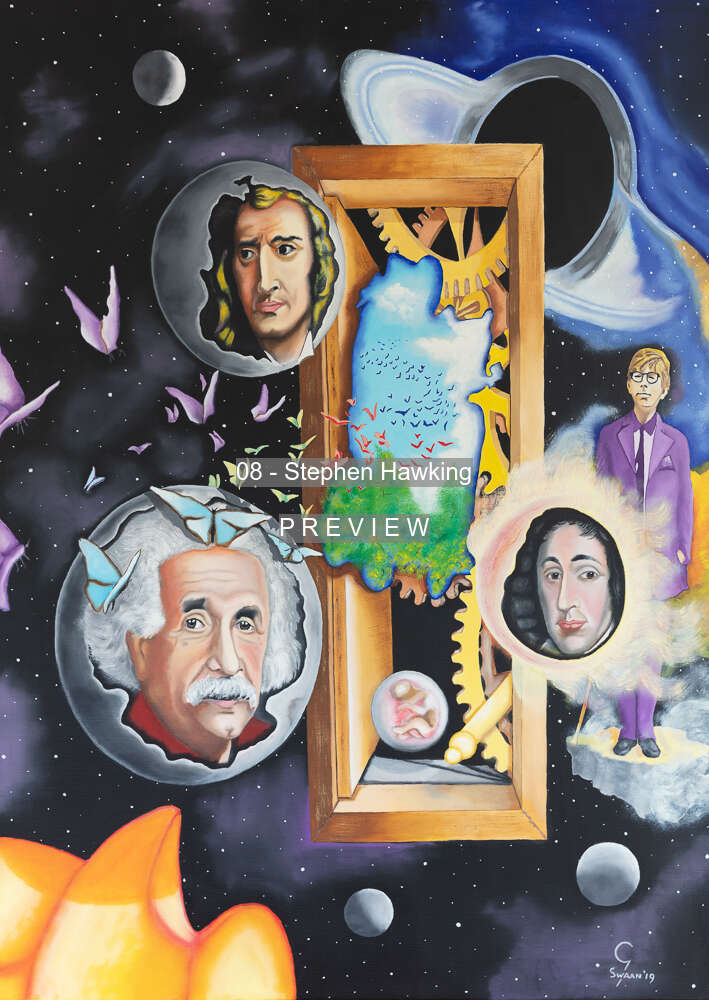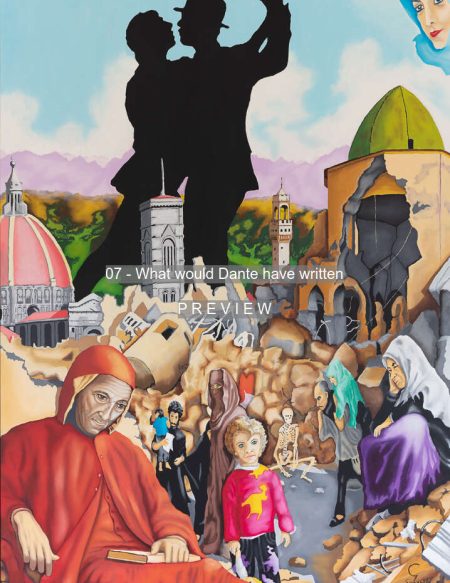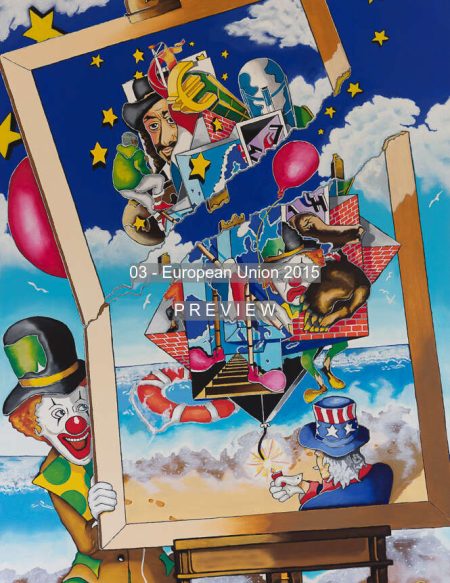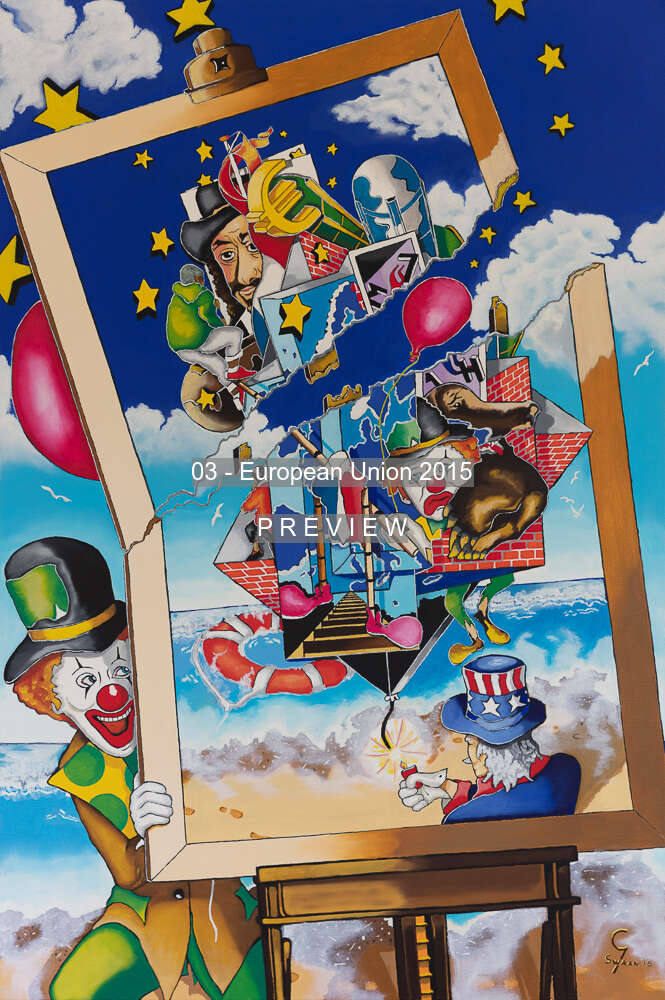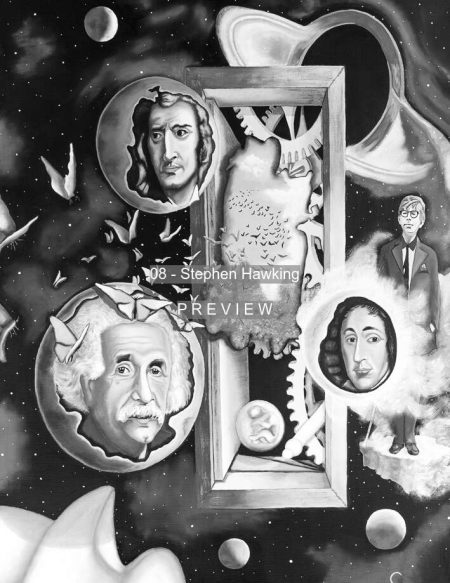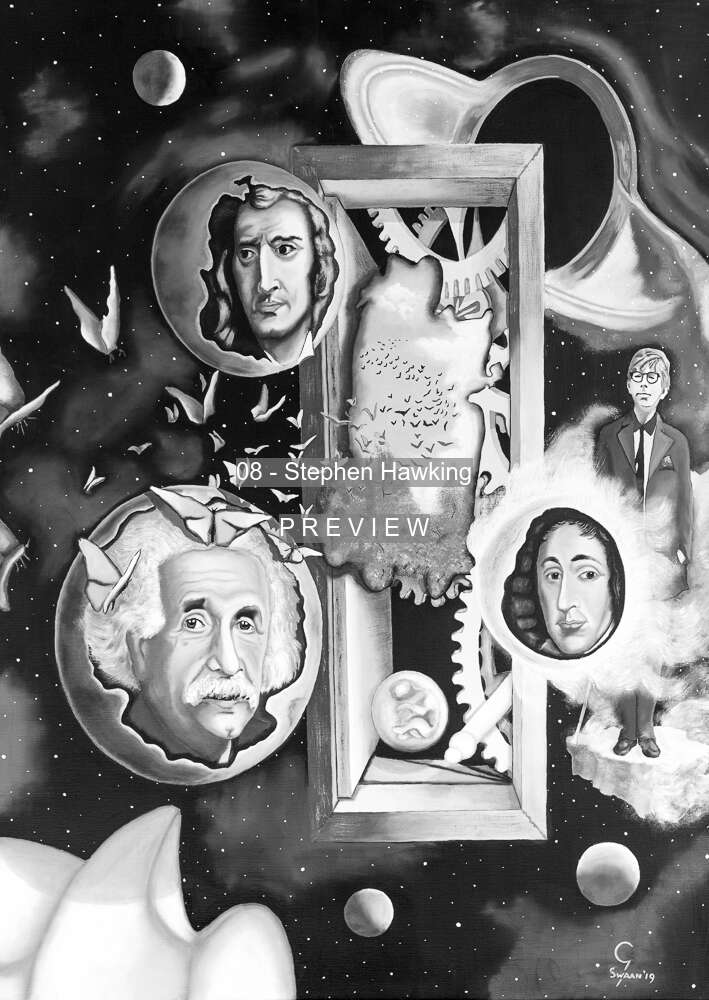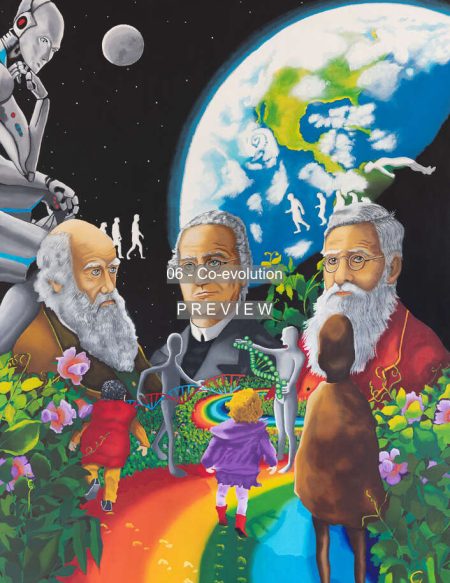Description
This oil painting was made in 2019 on linen with an aluminum stretcher and is placed in a black baking list. The size of the painting is 140 x 100 cm and has been finished with a matt varnish.
The person standing on the right, behind the planet of the philosopher Spinoza, is a young Stephen Hawking, a British physicist, cosmologist, and mathematician, who looks at his physical future on the one hand, and his scientific future on the other. His physical future was clearly affected by his ALS. He was largely paralyzed and spent most of his life in a wheelchair, and speaking was only possible through a special speech synthesizer. See the projection of the figure Stephen Hawking in the center, where the butterflies fly as part of living nature.
Scientifically, Hawking became a true icon, assisted by his best-known predecessors, the planet Isaac Newton, portrait top left, and the planet Albert Einstein, portrait bottom left. His ideas and theories led to fundamental changes in thinking about the universe, and Stephen Hawking is best known for his work on:
The black holes and singularities
An important discovery was the Hawking radiation. This radiation is the first discovery in the field of quantum gravity, shown center-right devouring the Spinoza planet by a black hole.
Imaginary time in cosmology
In Hawking’s mathematical concept that time has become computable because it and the universe have no beginning, time stands still, which is shown by the clock behind the door. Hawking also committed a true attack on the cosmological proof of God with his concept, explaining him away and the idea of his creation of earth and man, which is depicted as the fetus.
Unlike Newton, Einstein believed in the philosopher Spinoza’s God, who reveals himself in the harmonious order of the world, not in a God who deals with the fate and activities of people. The nature where the butterflies fly to, everything that exists, is an appearance of God, so also man himself.
The string theory
This mathematical theory tries to unite all the laws of nature and assumes that the smallest building blocks in nature are not point-shaped particles but small strings shown here in the non-detailed figure in yellow at the bottom left. Through this theory, Hawking wanted to make short work of the infinite multiverse, which is demonstrated by the second universe dimension behind the door where the stairs go.
Gerrit Swaan

